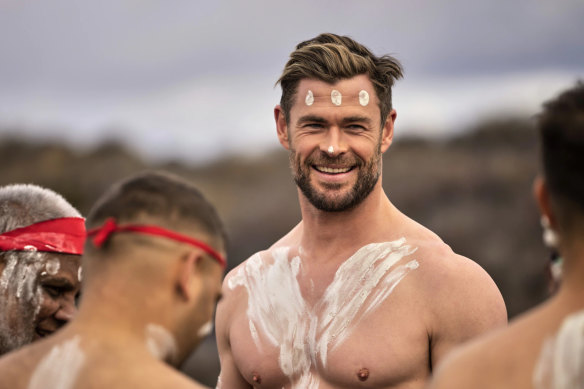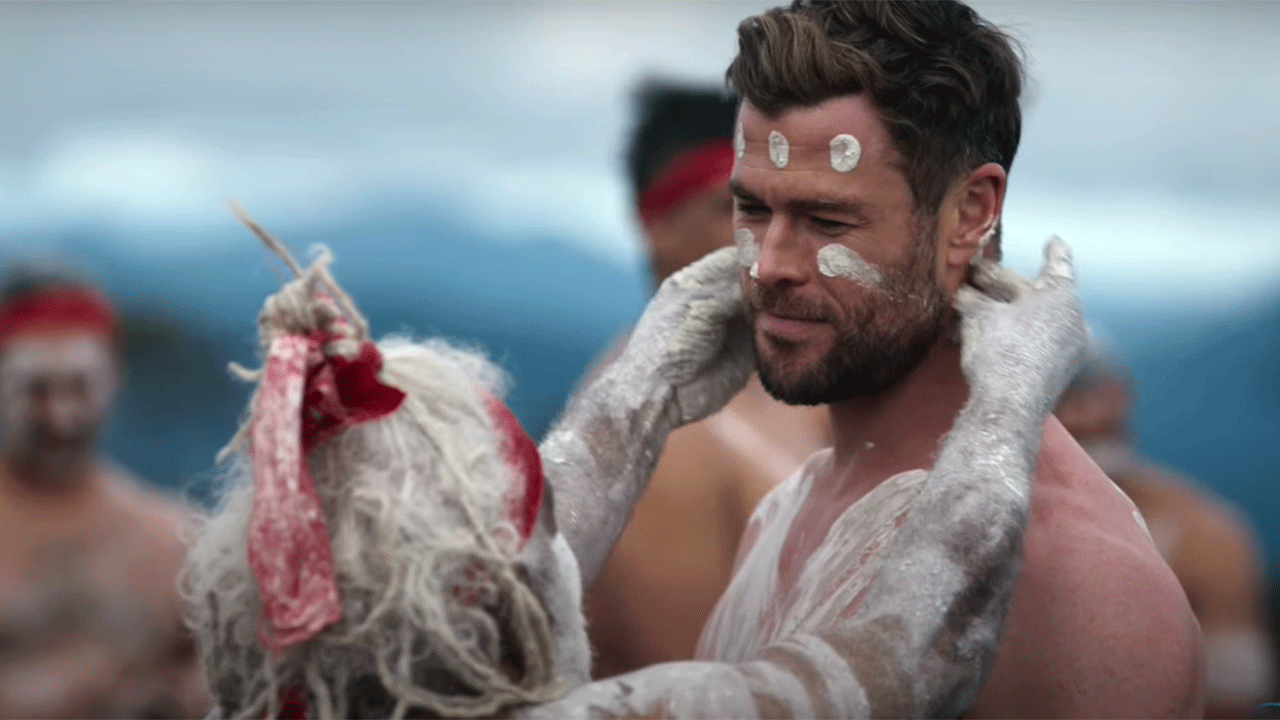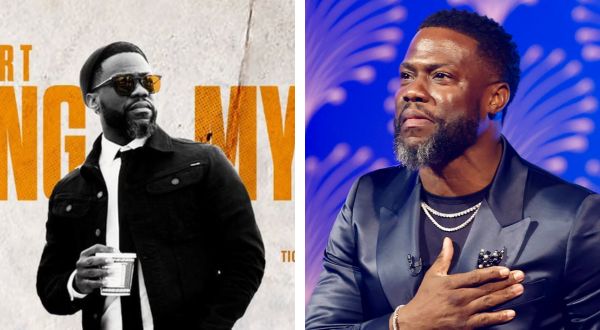First Nations groups are divided over a television show depicting Australian Hollywood action hero Chris Hemsworth joining a ceremony after trekking through the New England National Park in northern NSW.
Scenes from the highly publicised National Geographic series Limitless depict Hemsworth painted in white ochre and dressed in a red lap-lap taking part in a cultural ceremony at Wrights Lookout – a significant site located on a sacred ridgeline known as Serpentine, or Boorongutta’s sleeping place.

The fifth episode of Limitless shows actor Chris Hemsworth taking part in an Indigenous cultural ceremony.
Like many sacred cultural sites to the local First Nations people, Wrights Lookout has been open to the public for a number of years.
Some Indigenous groups welcomed the filming as a historic bringing together on shared country of three tribes – the Thunggutti and Gumbaynggirr on the Mid North Coast, and the Anaiwan from what is today New England. Anaiwan elder Les Ahoy from Armidale said it was “fantastic”.
But it has also caused community upset, particularly among members of the Thunggutti mob at Bellbrook, who say they should have been consulted about filming on their traditional lands. Their community in the tablelands 50 kilometres west of Kempsey is one of the closest to the film site, and say the location sits within traditional Thunggutti territory.

Thunggutti elder Uncle David Toby said from his perspective, “there was no consultation whatsoever”.
“This is a community,” the Bellbrook local said. “When you get one person saying ‘Yeah’ to it, that’s not right.”
Aunty Ruth Dunn, also a Thunggutti elder from Bellbrook, said: “It was very disrespectful to culture … to the Indigenous people in this Country.”
Production company Nutopia and the national parks service say permission was given by relevant landowners and elders, with cultural authority from all three tribes.
The dispute highlights the fraught territory for filmmakers seeking permission from traditional owners to film on Country and depict cultural practices.

“It was very disrespectful to culture … to the Indigenous people in this Country.” The Thunggutti mob at Bellbrook say they should have been consulted about filming on their traditional lands.
Hemsworth’s management said the actor was unavailable for comment and referred questions to the production company. Ruth Shurman, an executive producer at Nutopia, said the production employed an Indigenous cultural consultant, engaged extensively with the three nations, included Thunggutti elders and dancers in the ceremony, and Bellbrook mob had been scheduled to attend but did not turn up.
“Respect for First Nations culture has been a priority for our production team at every stage,” Shurman said.
A spokesperson for NSW National Parks and Wildlife Service said written support for the filming, including the location at Wrights Lookout, was provided by Thunggutti Local Aboriginal Land Council, Bularri Muurlay Nyanggan Aboriginal Corporation in Coffs Harbour, and Coffs Harbour Local Aboriginal Land Council. Bularri and Coffs Harbour land council declined to comment.
The Sydney Morning Herald and The Age do not allege wrongdoing by Hemsworth or any individual or organisation involved in the project.
Limitless, available on streaming platform Disney+, is about health and longevity. The fifth episode about memory shows Hemsworth and his friend Otis Hope Carey, a Gumbaynggirr-Bundjalung man, on a two-day bushwalk. They are shown walking through dense eucalyptus forest and riparian rainforest punctuated by dramatic rock escarpments, waterfalls and waterholes, ostensibly without modern navigational equipment.
The walk is book-ended by a welcome to Country at the start and a ceremony with Aboriginal dancers at the end.
Nutopia, Ahoy and the national parks service have all rejected the suggestion there was filming at Serpentine. Ahoy said Serpentine was several kilometres away from the shoot location. The national parks website lists Wrights Lookout as a sacred men’s site. Ahoy said the decision to use the lookout and allow a mixed-gender film crew onto the site was an agreement between the three nations, involving initiated elders with strong cultural knowledge.
“We have a right to practise our culture on our Country and we do so in cultural safety and knowledge,” Ahoy said.
While the episode was about memory, the conflict has arisen in part because of the fracturing of cultural memory through colonisation.

A scene from Limitless showing actor Chris Hemsworth as the focal point during the cultural ceremony.
The location was billed in the television show as “a shared country between the three tribes”, but this is contentious. While it was traditionally used by all three nations, Thunggutti mob believe it is their ancestral Country with treaties in place for the other two mobs to access it for use according to traditional lore. Ahoy said it was Anaiwan land.
The Mid North Coast was wracked with frontier violence and heavily colonised in the aftermath of the first wave of dispossession, with Aboriginal people removed from their clans’ ancestral homelands and forced into government and church-run reserves – or missions. People from different clans and nations were purposely mixed, and government-sanctioned bans placed on cultural practices and the use of traditional languages. Residents could not leave the missions without permission from a government agent.
The Aboriginal community at Bellbrook was formerly one such mission.
Holten said no dancers from his own mob attended because of the lack of cultural observation.
Indigenous human rights and policy adviser Jason Field, a Walbunja-Bidjigal man living on the NSW South Coast, said mining companies in particular have been accused of inciting tensions to get their way, but this kind of dispute was common even when efforts to gain consent were genuine.
“What often happens is there are multiple lines of authority and you can think you’re doing the right thing, but if you follow one line or even two you will find situations where someone will feel aggrieved because they weren’t consulted and they feel that they should have been,” Field said.
Field said cultural heritage services in Australia operated in a marketplace, and cultural rights could often clash with “personal interest in terms of being able to generate an income for yourself and your family”.
He said there were United Nations guidelines, such as the Nagoya Protocol, that could help guide best practice.
Source: smh.com








